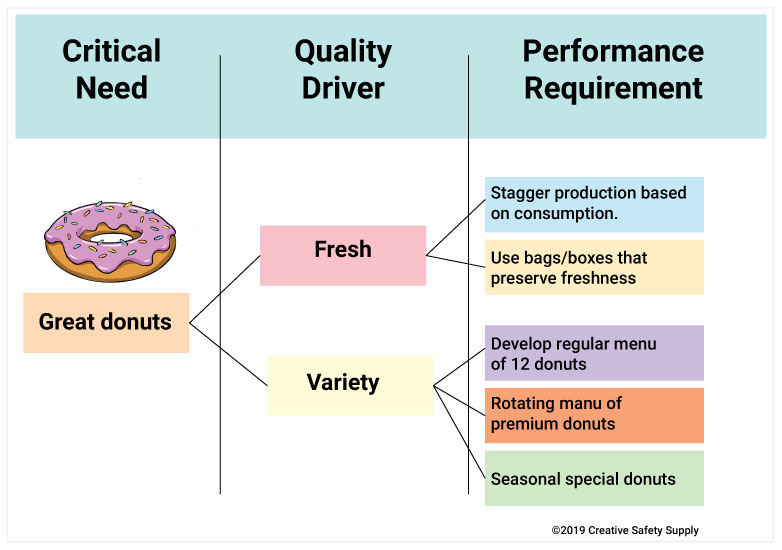
CTQ Trees, or Critical-to-Quality Trees, are a Six Sigma tool that is driven by data and a diagram to ensure companies are meeting the needs of customers while producing a high-quality product or service. The basis for this strategy are the CTQs, which are parameters relating to what a customer wants and needs in order for a product or service to be satisfactory.
The CTQ Diagram

The CTQ Tree is a visual diagram a company can use to understand the voice of customer and integrate those parameters into processes in order meet the needs and wants of the customer.
Critical need > Quality Drivers > Performance Requirements
The CTQ diagram first starts with identifying what a customer’s needs. These needs are ones that a product or service will need to deliver for the customer to be happy and satisfied. One CTQ Tree should be completed for every need identified. Identifying these needs can be often be done by compiling survey information from customers in order to prioritize needs.
This part of the CTQ diagram is then expanded by listing the corresponding quality drivers. Quality drivers are factors consumers will use to evaluate the quality of a product or service. These factors are necessary to meeting the needs of customers. Using other Six Sigma tools, like the Kano model, can be extremely useful for this step.
The third step is to identify and list the minimum performance requirements that must be present to satisfy quality drivers, thus fulfilling the critical need and creating a quality product or service. Performance requirements are measurable and can be a variety of factors including resources, technology in the workplace, training, etc.
After completing a CTQ Tree for every critical need identified, a list can be compiled of performance requirements that must be met to satisfy the customer’s critical needs. By implementing these requirements into the design or manufacturing process, you will fulfill the needs of consumers while offering a high-quality product or service.
Similar Glossary Terms
- CTQ
- Quality Function Deployment
- The Kano Model
- Voice of Customer (VOC)
- House of Quality
- Axiomatic Design
- APQP (Advanced Product Quality Planning)
- Fault Tree Analysis (FTA)
- DMADV


